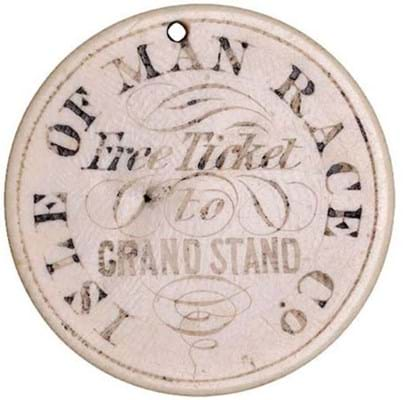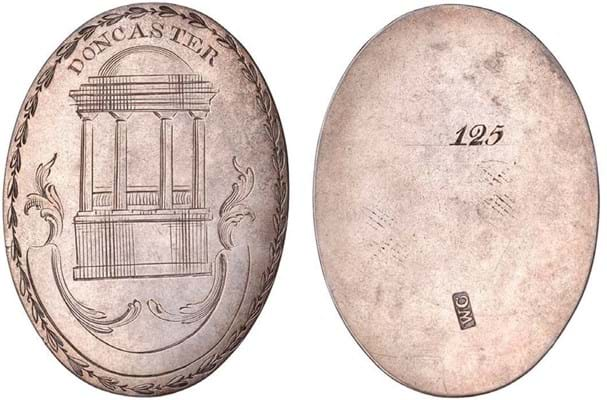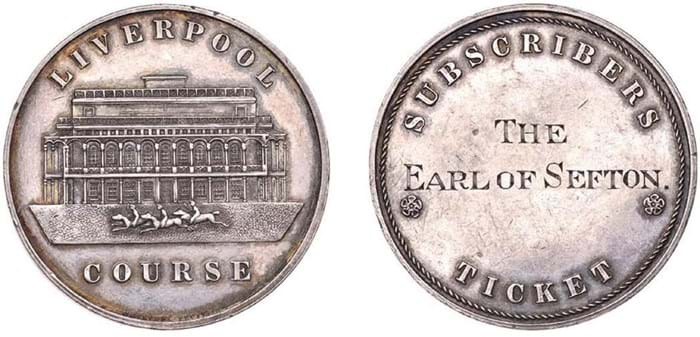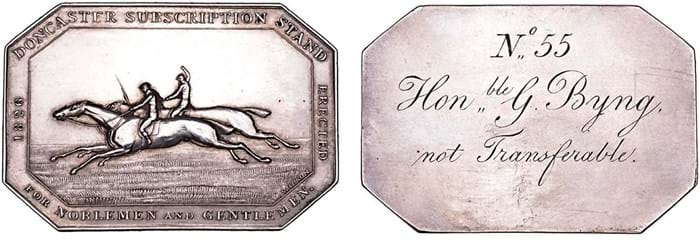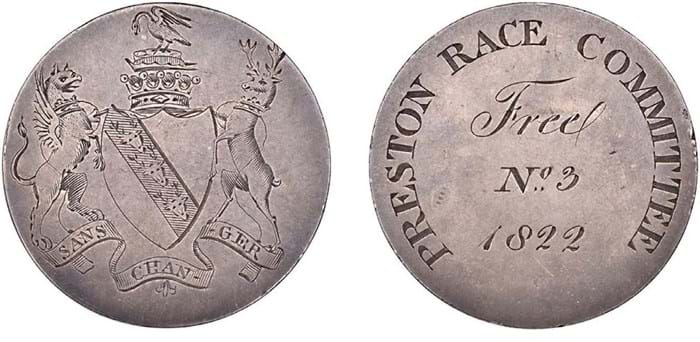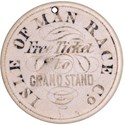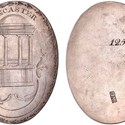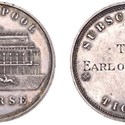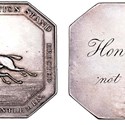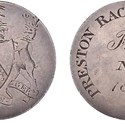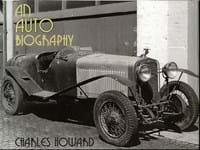WHAT was dubbed ‘the world’s finest collection’ of British horseracing tickets and passes was sold by numismatists Dix Noonan Webb (20% buyer’s premium) in London on December 13.
Nothing quite like it had been on the market before in recent memory.
Assembled by a Yorkshire racehorse owner over the past 30 years, the collection covered courses both celebrated and obscure, and included pieces issued to some of the most famous names in the history of the turf.
Many of these silver, gilt metal or ivory tickets (similar to those issued by theatres) have their origins in the 18th and early 19th centuries and the building of the infrastructure surrounding Britain’s racecourses. In return for contributions, subscribers would receive a ticket or pass, entitling them to free admission, often for lengthy periods and sometimes for life.
Considerable skill and craftsmanship went into the production of some of these passes. One of the most attractive pieces in the collection was an octagonal silver pass issued by Doncaster Racecourse in 1826 to George Byng (1764-1847) of Wrotham Park, Hertfordshire, and Whig MP for Middlesex for over half a century.
Cast with a scene of two racehorses galloping, it is clearly marked as being For Noblemen and Gentlemen and inscribed not Transferable. Offered in a contemporary maroon leather fitted case and estimated at £800-1000, it did not look expensive at £850.
Yorkshire courses featured strongly in the collection, reflecting both the importance of the county in the racing story and the home of the anonymous collector.
An oval gilt-bronze pass dated 1768 for the Trier’s Stand at York was named to the back for the Marquis of Rockingham. The token itself is a rarity but this one references the two-time Prime Minister Charles Watson-Wentworth, 2nd Marquess of Rockingham (1730-82). It took £1300 (estimate £500-800). A similar token for the New Stand at York (1803) named for Mr W. Harvey, No. 17 sold at £340.
The collection included two passes bearing the coat of arms of Edward Smith-Stanley, 12th Earl of Derby (1752-1834), the sportsman who gave his name to one racing festival and the name of his Surrey estate (the Oaks) to another. Cockfighting was his other passion with some contests worth as much as 1000 guineas to the winner.
Both silver racing passes were issued by the Preston Race Committee for a racecourse at Fulwood Moor that held regular meetings between 1727 and 1833 and again from 1842 until 1850.
Estimated at £1000-2000 each, both sold at £1300.
Another silver subscriber’s ticket that was once the personal property of a man who shaped the story of horse racing was that issued by Liverpool Racecourse to the Earl of Sefton. The 2nd Earl of Sefton (1772-1838) was an enthusiastic gambler and leased land for the course at Aintree. The rare pass, cast with a scene of three horses cantering past a grandstand, was estimated at £400-600 and sold at £650.
Out of the running
However, some of the most animated competition was for passes to longforgotten racecourses.
Warrington racecourse was situated on Latchford Heath to the south of the town. Events were staged there in the first half of the 18th century but racing had ceased not long after the series of silver and base metal passes were created for wellto- do visitors in 1761. Each carries the image of a standing horse held by a jockey. There were three examples here sold for between £400 and £1300, the latter for an example in silver described as ‘very fine’.
An octagonal silver pass for the racecourse at Northampton, engraved with a standing racehorse and named and numbered to the back 41, Honble. Col. Anson trebled hopes at £1600.
Race meetings were staged unofficially at Northampton Heath from the 17th century (the first official meeting took place under the Earl Spencer in 1737) but the three lots in the sale probably dated from around 1844 when a grandstand was erected.
At the time, Waterloo veteran Major-General George Anson (1797-1857) was a prominent racehorse owner and member of the Jockey Club, winning the Derby with Attila in 1842 and the Oaks with The Princess in 1844. The course at Northampton (doubling as the site for public executions) closed in 1904 after a fatal accident involving spectators.
The early history of horse-racing on the Isle of Man is less wellknown, although racing was held at Peel, Douglas and Ramsey in the period 1811-14 and on land at Kirk Braddan. An ivory token carrying the inscription Isle of Man Race Co, Free Ticket to Grand Stand is one of only three known and had previously last been sold in 1990 as part of the RJ Ford collection at Spink. Estimated at £400-600, it took £1100.
An oval ivory ‘access all areas’ pass for the Shrewsbury Race Course Co Ltd dated 1885 and numbered 36 sold at its top estimate for £1000. Racing first took place in Shrewsbury in 1718, with its oval racecourse created in 1832, but such was its reputation for race-fixing and pickpockets that the final meeting took place in 1887. The site is now housing.
The entire collection, estimated to fetch up to £38,000, hammered down at £39,745. Christopher Webb, head of the coins department at DNW, described purchasers as “a select band of collectors” of three distinct types: those who collect tokens, tickets and historic medallions, racing enthusiasts and others collecting items germane to local history.


